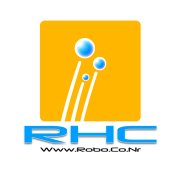Versatile New Laser May Change Surgery, Metallurgy and More
PETALUMA, California -- Barry Schuler, the former CEO of AOL, has a laser he says can do it all. It can cut metal, heal burns and kill cancer tumors -- all without damaging heat.
All you need is one of his ultrashort pulse, or USP, lasers, he said. To change the function, just change the software. He's so confident in the technology that he's built his latest business venture, Raydiance, around it.
"Bits and blades are all going to be replaced by light," says Schuler, who ran AOL after the Time-Warner merger. In 10 years, he said, the technology will lead to a "smart" power tool that won't need sharpening and won't cause injuries.
The technology can't do any of these things yet. All Raydiance has is a small black box -- but that's no small feat. The technology once filled a large room at Darpa until Raydiance scientists made it into a compact, tabletop unit. Schuler said he hopes it will replace just about any cutting device you can think of, from a big metal saw to a precise surgical blade.
Scientists have long known that USP lasers could do cool things, literally, by cutting without generating heat. But the lasers' complexity and large size made the technology impractical. Now that it's a little bigger than a breadbox, researchers want to use them to kill cancer tumors, identify friend or foe during combat, and even remove tattoos. The company has distributed about a dozen Raydiance units to researchers around the country, and hopes to have 30 in the field by the end of 2007.
Raydiance is still tiny. It has just 30 employees and an initial investment of $25 million from venture capital firm Draper Fisher Jurvetson. (Schuler is managing director of the firm's growth fund.) About 25 other USP laser companies exist, but most focus on using the lasers in scientific research.
It's a niche technology that seems to generate a lot of passion, perhaps because the technology has been around for about 25 years, but has been notoriously difficult to work with. Now, many of the kinks have been worked out, and veterans like Bill Clark, CEO and co-founder of Clark-MXR, believe lasers are on the cusp of a boom.
"We're like where we were in the '60s when the laser was first invented," Clark said. "People kept asking: 'It's an interesting technology, but what problem is it going to solve?' Nowadays lasers are ubiquitous. Everything we know about telecommunications is done with lasers. I think we're at the same threshold with USP lasers."
The field saw a significant application breakthrough in 2005 when the FDA approved Intralase's USP laser to perform the first part of LASIK eye surgery -- cutting a flap to reveal the cornea. The procedure was previously done only with a knife, and was the cause of most LASIK complications. In March, Advanced Medical Optics acquired Intralase for $800 million.
Ron Waynant, an optics physicist at the FDA, has been working with lasers since 1962, just two years after the first laser was invented. He said he's trying to be conservative about the promise of the Raydiance laser, but he believes it could have up to 100 medical uses -- from removing tattoos to performing ultra-precise burn surgery.
The laser pulse is on for such a short time (a femtosecond, or one-millionth of a nanosecond, or 10 to the negative 15th power), there's no chance for heat conduction into the healthy tissue nearby. The result is a clean cut that heals quickly.
"The short pulse is very effective in not damaging the tissue that's left behind," Waynant said.
Waynant envisions an even more precise laser eye surgery to replace the second phase of LASIK -- removing tissue from the cornea -- with less damage than today's version. He also imagines a light-activated glue to take the place of stitches, preventing distortion of the eye's shape. He said he's also in talks with Johns Hopkins surgeons about using the technology to perform cornea transplants.
Ahamed Idris, professor of surgery and emergency medicine at the University of Texas Southwestern Medical Center in Dallas, wants to use the Raydiance laser for treating burns. Now, scientists train 20 years to develop the skill required to treat a burn, which involves cutting away damaged tissue. If any burned tissue is left behind, it will damage the surrounding healthy tissue. It's also extremely painful and usually requires general anesthesia. But because burn patients are in such a delicate state, doctors must wait up to 72 hours for the patient to become stable enough for anesthesia and treatment.
The laser would be easy to use, and because it doesn't give off heat, would be much less painful and likely not require general anesthesia -- so treatment could begin right away.
That would be particularly useful on a battlefield, and Idris has a grant application in to the U.S. Army. If it's approved, he hopes to begin research in September.
When USP lasers hit skin or any other material, the material releases a vapor. Each vapor has a unique spectrographic signature, which can serve as a marker for doctors to precisely pinpoint what type of tissue they're aiming at, whether it be burned skin or a cornea.
"That's important because we think that instantaneous analysis can be used to drive the laser with a computer," Idris said. Aimed at a tumor, software would use the spectrograph to zap the cancer but leave healthy tissue intact.
Controlling the laser with software is a key aspect of the Raydiance business model. Schuler said he envisions a whole new field of software development evolving around his laser. He also wants to sell the unit using a subscription model in which users rent the machine and can download updates through the internet.
Sound familiar? Here's hoping Raydiance won't promote those updates with free CDs that fall out of magazines.









